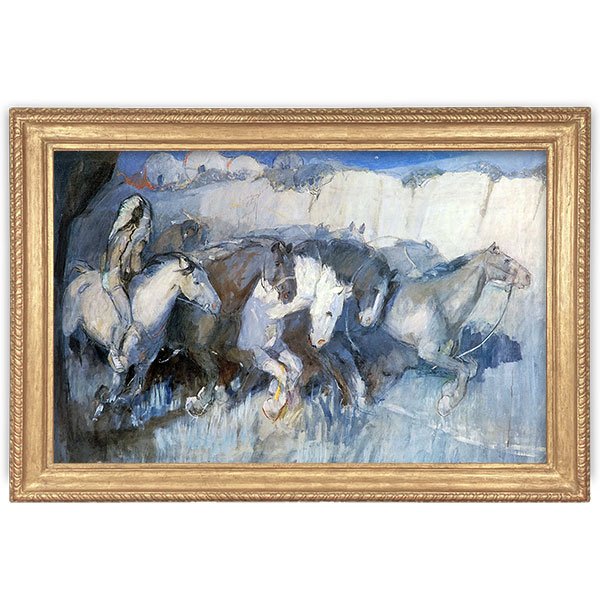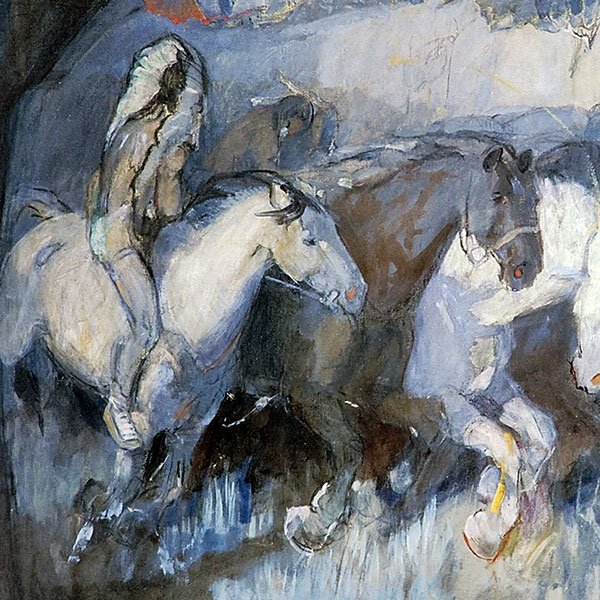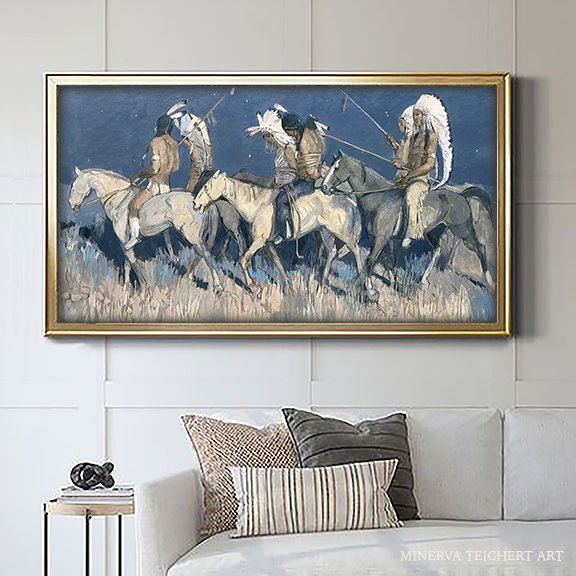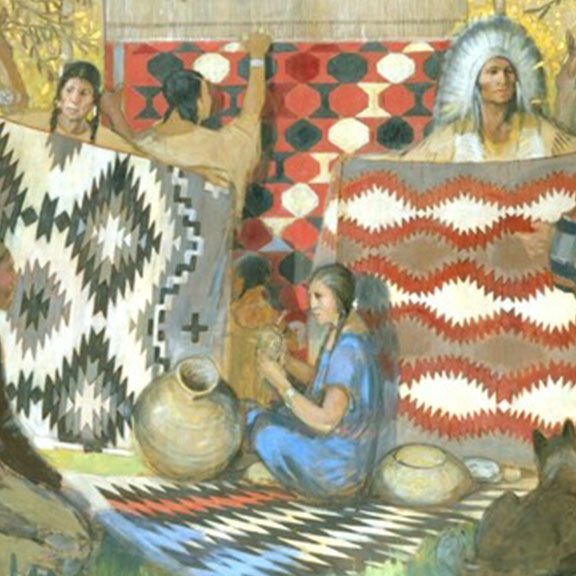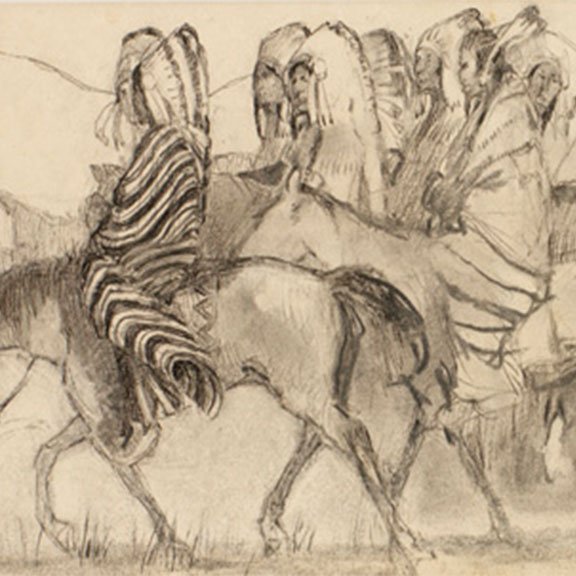Night Raid by Minerva Teichert (c. 1939)
This painting titled simply “ Night Raid” show horses being led off into the night in a scene long since forgotten. Her use moonlight and dark blues make this a perfect example of Teichert’scomand of color, light and hues. Growing up in the American West gave Minerva Teichert a unique perspective on its people and their cultures. Minerva’s art is highly theatrical - her passion for film and theater is reflected in her art, not only in composition but in subject.
History of Minerva Teichert’s Painting of Native Americans
In 1932, Minerva Teichert’s novel “Romance of Old Fort Hall” was published by the the Metropolitan Press in Portland, Oregon. Inspired by her association with the Shoshone and Bannock Native American Indian tribes, Minerva not only wrote, but painted scenes that captured the western art experience in beautiful colors and pageantry. Her work in this regard highlighted the unique and beautiful differences between the “white teachers” of the schools that were established for the Native Americans, and their actual native culture. Teichert’s work in this area has long been considered a proud and important illustration of the majesty of Native American life in the western United States. Leaving out the influence of the Euro-Americans on this glorious people, she made proud and uplifting depictions of the life and contribution of the great indigenous people we once called the American Indian.
Teichert records that when she was very young, her family moved to Idaho and lived within the imprint of the Fort Hall Reservation which was established in 1834. She saw colors, feathers, blankets, and people who were the proud, beautiful royalty of a land in which she grew up. Late in her life, she would recall the vivid memories of a dying race and spoke how she was among the last witnesses of a dying race of a once great people. Many of her paintings covered the subject of the Native Americans and today they tell a story that is important to not only her experience, but to that of a people we once lived among.
More About Minerva Teichert
Minerva Teichert was an artist whose works ranged from western American subjects to many religious paintings primarily depicting the history of the Latter-day Saint movement. This includes Minerva’s several works requested by the Church that were used to illustrate the stories using Book of Mormon art. She is also well known for the many murals she painted in public and private buildings scattered throughout Wyoming, Idaho and Utah. She was born Minerva Kohlhepp in 1888 in North Ogden, Utah. Minerva was the second of ten children and spent most of the first half of her life doing just as much farm work as she did painting. She studied under famous artists like Robert Henri at the Art Institute of Chicago and Art Students League of New York. When she was 29 years old, Minerva Kohlhepp married Herman Teichert on September 15, 1917. However, only one year after their wedding, World War One broke out and Herman left for battle. Although Minerva traveled with Herman throughout his boot camp training and transfers, she was eventually forced to bid farewell and stayed at home with their new born baby son. During the early years of their marriage, everything was in short supply because of the war, so Minerva Teichert would paint on scraps of wood and paper because there simply wasn’t enough money to buy art supplies. Fortunately, Herman returned home after the war and the couple went on to have four more children. Minerva and Herman spent most of their lives on a ranch in Cokeville, Wyoming. Much of Minerva Teichert art can also be found by searching for LDS art, LDS church pictures, and Mormon art; even though these are not official names of the Church of Jesus Christ of Latter-day Saints.

